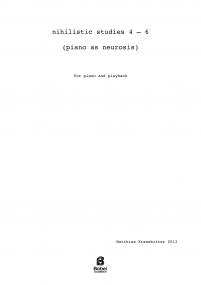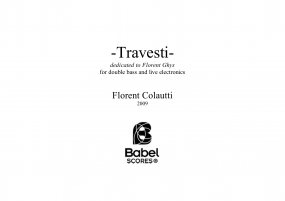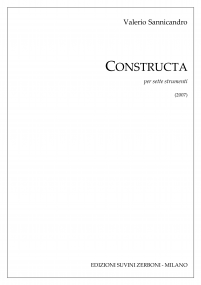Tracer le Souffle
ISMN : 979-0-2325-7401-1
- Login to create your own lists
Tracer le souffle explores air as a trace – its own, ambiguous trace, or a trace in combination with other reverberating traces – opening and revealing the porous borders (and possible confusions) between air and resonance. The work explores the limits of the air-breath-friction-resonance continuum by incorporating an additional layer: a combination of effects processors. The triple human-machine-technology resonance ‘mirror’ expands the traces multiplicity and extreme extensions – until white noise and saturation.
The air and resonance echoes and reverberation ‘illusions’ are extended by the augmented accordion configuration. Human breath and mechanical air, frictions on an elastic instrumental body and new sounds and actions of the setup configuration (accessibility of the microphones to the hands/breath of the performer, stereo projection and amplification-diffusion of the accordion’s techniques and effects) are reworked through an overarching (performer controlled) effects layer. This complex intertwinement between the machine, the electronic, the human and ‘tactile’ forms of air (souffle) allow a multifaceted expansion, an ‘orchestral’ medium for the air and resonance development in a single instrumental setup.
The accordion is one of the only instruments in which the dual physical/expelled and contact/tactile souffle action is achievable. The complexity of the white noise, air, breath, friction and resonance interactions creates the piece’s development. These interactions expand towards multiple energies and time and sound forms.
A reflection on the human and the ‘artificial’ (and finite and non-finite) forms of air and breath – until white noise – opens through this. Such ‘hybridities’ extend beyond corporeality. As a specific instrumental body and ‘air machine’, the accordion opens-up even more the complex ambiguity between the respiration (inhalation/exhalation of the human and/or of the machine), the friction (the rubbing/scraping of the instrument and/or of its amplification means, here the two microphones), and the traces of air and their augmentation (amplification/diffusion and effects creating modifications).
Accordion
Pages - 20






